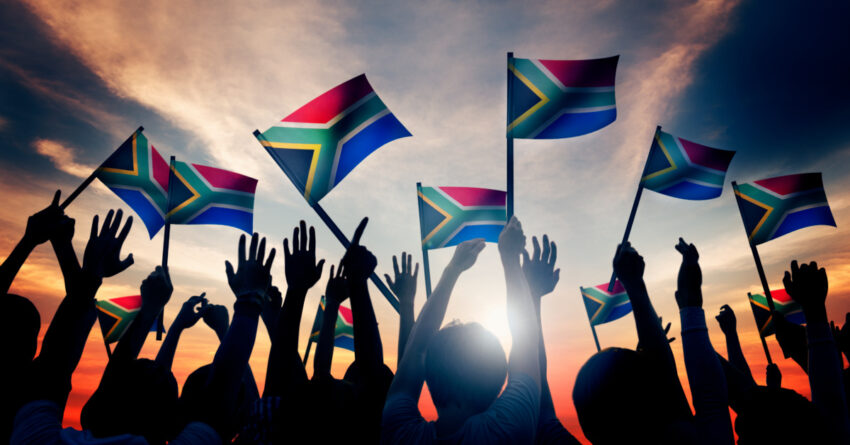My experience last week with a failed trip to South Africa on United Airlines convinced me that South Africa needs its national carrier and should find a way to maintain it no matter what the cost. There’s no way to put a number value on what that airline brought to the country.
I was booked on a United Airlines flight from Newark at 9:15 p.m. that was supposed to land in Johannesburg at 5:45 p.m. the next day, after 14 hours and 40 minutes in the air. Many people won’t take a flight that long, and for good reason. Sitting in an airplane for 15 hours is not many people’s idea of fun. It can be fun, but it has to be tiring. It was particularly trying last Thursday, and the flight never left the ground.
We boarded on time. The pilot came on the PA system sounding bubbly as he told us he expected us to arrive at the destination 40 minutes early. That sounded great. It was a packed flight, all 246 seats full. We were ready to go.

Then the pilot came back on and said there had been some maintenance issue, the door to the baggage compartment required a fix before we could take off. The texts started rolling in from United, announcing the delays. When the door was fixed, he sheepishly announced that they had discovered that the plane didn’t have enough he dry ice to keep the food fresh. The passengers were riding this wave from one delay to the next. For hours, we were expecting to take off any minute.
It was one thing after another as hours spun by. The on-board staff were exemplary, I have to say. They handled this very well, even when some passengers started to get cheeky with them. The passengers also handled it well. Everyone seemed quietly stunned as they digested what the pilot was saying. Sometime after midnight the pilot told us we “timed out.”
It became apparent that the flight was canceled.
All the energy and planning you invested to bring it all into focus at the moment of departure is poof! Gone. What now? You hit a wall. It was like having the wind knocked out of you.
So how many of those passengers will drop the idea of that long, difficult trip? How many who were headed to Africa’s Travel Indaba, set for May 9-11, will not be able to change their schedules to make it to the conference? And how much business might the missed meetings from that conference have generated in coming years? How many potential visitors will be sidetracked and deterred from going? How many will discourage others with their stories of the horrors of long-haul travel? South Africa cannot afford to lose those potential visitors.
The premier airline consumer advocate, William J. McGee, has been warning for years that some of the airlines’ cost cutting practices in maintenance could over time increase the risk to passengers. I can’t help thinking that my experience was related to that fact. So many problems keeping us from taking off. Unfortunately, it’s not anomalous. Three of my last six trips with United have involved long, painful delays sitting on the tarmac.
United
As with all corporations, United Airlines’ mandate is to maximize shareholder value. It cannot deviate from that, or its board could get into trouble. That’s the law. United can provide a route to South Africa if it’s profitable. That is where it stands in United’s priorities, and rightly so. United is not on a good-will mission between the United States and South Africa, except to the extent that it bolsters its bottom line.
United likes to please its customers, sure, but it doesn’t have much competition, and without competition one gets a little lax. Competition is at the heart of Adam Smith’s theory of capitalism. It doesn’t work without competition. Competition keeps companies alert, strong, accountable to their customers. This is relevant here because maintenance cuts can lead to problems that didn’t have to happen. Good maintenance is anticipatory, preventive, reducing the probabilities of mishaps and dysfunctions.
American airlines are accustomed to a business environment in which a few giants divvy up the whole country by their respective hubs rather than really all-out competing. When they enter international markets, they have trouble standing up to some very serious competition. SAA, a few years ago, was one of the airlines I held up as an example of how much higher airline standards are overseas.
For most people a trip to South Africa is a plunge, and not because of the cost. South Africa is one of the least expensive, high-value destinations in the world. Even the cost of airfare is surprisingly mild, considering the number of miles involved. It’s a plunge, not because of money, but because of the long flights. It’s the commitment to many hours of being a pawn to forces you have no control over. The few surviving American airlines are giant corporations that move millions of people around every day. You are a pixel on their world map. And they tend to shove you around like so many little pixels.
South African Airways
The national carrier was a whole different concept of airline. The mandate of the government-owned South African Airways was to provide a reliable air transport system for the country, because no country can possibly maintain a modern, functioning economy without reliable air transportation. SAA was like a public utility. It was part of providing the essentials for South Africa’s economy to function. It didn’t necessarily turn a profit, but that was not its purpose. It was there to grow the country.
South Africa is a long haul from most of the countries it does business with. It’s practically inconceivable how huge Africa is. I got a glimpse of its mass once when my flight stopped in Africa, at Dakar, Senegal, and I discovered we were only half way from New York to Johannesburg.
SAA was a specialist in providing excellent long-haul service between America and South Africa. They had the long-haul thing down solid. It’s South Africa’s bread and butter. SAA kept up with the latest upgrades to business class travel, such as flat fold-out seat/beds; a dizzying selection of media options, so that you almost wish you had more time on board; creative menus with dishes that seemed to come out of the kitchen of a fine restaurant; and a curated selection of South African wines.
The flight attendants were South Africans, so the second you boarded you were plunged into that cheery South African culture. SAA was an ambassador for the country, the first contact many foreigners had with it. And it probably had more impact than any actual ambassador could hope for.
South African Airways is now struggling to rebuild itself after the devastation of COVID, which essentially destroyed travel and trade for South Africa. The airline is only flying domestically now, as it tries to pick itself up by its bootstraps.
South Africa needs that cheery introduction, rather than the all-too-typical airline horror stories that are the first chapter of so many trips. It’s a hard trip, and SAA was brilliant at softening the long flight. A 15-hour trip is a bigger undertaking than most Americans are used to. A six-hour flight is fairly mild, but when you fly long haul, the second six hours wear you down more than the first.
I understand the need for fiscal discipline, but I don’t see any alternative to the country having its own national carrier. South Africa has to have reliable air service to continue the spectacular progress it has made into the new century.
I don’t know what the chances are, but I wish SAA could come out of retirement.
 David Cogswell is a freelance writer working remotely, from wherever he is at the moment. Born at the dead center of the United States during the last century, he has been incessantly moving and exploring for decades. His articles have appeared in the Chicago Tribune, the Los Angeles Times, Fortune, Fox News, Luxury Travel Magazine, Travel Weekly, Travel Market Report, Travel Agent Magazine, TravelPulse.com, Quirkycruise.com, and other publications. He is the author of four books and a contributor to several others. He was last seen somewhere in the Northeast US.
David Cogswell is a freelance writer working remotely, from wherever he is at the moment. Born at the dead center of the United States during the last century, he has been incessantly moving and exploring for decades. His articles have appeared in the Chicago Tribune, the Los Angeles Times, Fortune, Fox News, Luxury Travel Magazine, Travel Weekly, Travel Market Report, Travel Agent Magazine, TravelPulse.com, Quirkycruise.com, and other publications. He is the author of four books and a contributor to several others. He was last seen somewhere in the Northeast US.



